Para leer este artículo en español, por favor vaya aquí. To read this article in Spanish, please go here.
For the first time in the city’s history, all three of El Paso’s museums are being led by Hispanic/Latinx directors. Additionally, this spring the city will open a Mexican American Cultural Center, which will also be helmed by a Latina director. With 81.6% of El Paso’s population identifying as Hispanic or Latino, many of whom are Mexican-American, it is surprising that it took so long for museum leadership to reflect the demographics of the city. Despite being a majority-Latino city, positions of power have not often reflected the area’s demographics. Over the last few years the city’s museums have undergone an array of changes that ultimately position them to better reflect and serve local communities.
El Paso is unique in that the city government maintains a Museum and Cultural Affairs Department (MCAD), which supports the El Paso Museum of Art, the El Paso Museum of Archaeology, the El Paso Museum of History, and the developing Mexican American Cultural Center, and implements arts funding initiatives, public art programs, and performing and visual arts events. The department is overseen by Ben Fyffe, the Managing Director of Cultural Affairs & Recreation. When Fyffe was appointed to this role in 2020, he had already spent 19 years working for the city in a variety of positions, including as the Assistant Director of Museums and Cultural Affairs, Interim Director of Parks and Recreation, and Assistant Head of Education at the El Paso Museum of Art.
In recent years, each of the long-established museums was affected by the COVID-19 pandemic and underwent leadership changes. When the pandemic first hit in March 2020, El Paso shut down many of its “quality of life” services such as libraries, museums, and recreation centers. A year later, in April 2021, the city began to reopen these spaces, except for the El Paso Museum of Archaeology, which delayed reopening until June. During this challenging time, each of the museums also saw changes in leadership. In 2019, Victoria Ramirez resigned as the director of the El Paso Museum of Art; the position remained vacant until July 2023. In May 2021, Vladimir von Tsurikov departed his roles as director of the El Paso Museum of History and interim director of the El Paso Museum of Art after he was arrested for allegedly soliciting a prostitute. And in March 2022, Jeff Romney retired from his position as director of the El Paso Museum of Archaeology. With new leaders stepping in, all three institutions, along with the forthcoming Mexican American Cultural Center, have taken a renewed focus on collaborating with various communities, connecting to local culture, and showcasing underrepresented voices and stories.
El Paso Museum of History (EPMH)
The EPMH was originally established in 1974 as the Cavalry Museum. Despite the name, the institution always served as a local and regional history museum, and in 1980 its name was updated to reflect the reality of the organization. In 2000, voters passed a bond approving $6.5 million in funding for the construction of a new 44,000-square-foot building in the city’s Cultural Arts District. The building opened on June 16, 2007.
Current director Erica Marin explained that in the past the museum focused on a more traditional and narrow telling of U.S. history (through the lens of Whiteness), covering topics like cowboys and the Wild West. She pointed to the 2020/2021 exhibition Low & Slow: Lowrider Culture On The Border as a turning point in the museum’s direction. Prior to planning the exhibition, the museum worked closely with the community to ensure it had support to present local stories of lowrider culture. The community response was overwhelming; not only did the museum receive support and input through the planning process, but the closing celebration for the exhibition saw approximately 5,000 visitors, an attendance record none of the local museums had experienced before.
Though at the time Marin was not serving as the EPMH’s director, she was in a curatorial position. In 2019 she was hired as a curatorial contractor, and she later transitioned into the role of registrar. As there was not a curator in place, in this new role she continued to manage some of the curatorial endeavors in tandem with other staffers. Over time the museum struggled to find a good fit for the curator role, so eventually Marin applied for it and was hired. In 2021, following von Tsurikov’s departure from the museum, Marin was hired as director, making her the first El Paso native and Latina to helm the museum.
Speaking about what inspires her work, Marin explained that while she holds an MA in History/Public History from the University of Texas at El Paso and a BFA in Museum Conservation from New Mexico State University, she has worked as an independent curator and community organizer for many years. This kind of work often goes unpaid and unrecognized by people outside of an impacted community, but Marin’s curatorial work is built upon her culture and her community. Additionally, Marin points to her parents, who were Chicano civil rights activists, as a source of inspiration, as she grew up in an environment deeply rooted in social justice. That said, larger institutional changes take more than new staff coming in with new perspectives. Marin spoke of her gratitude to city leadership, saying they have been supportive in the new directions the history museum is taking.
Following the lowrider exhibition, other culturally significant shows included Lucha Libre: Stories From The Ring, Black Survival Guide, or How to Live Through a Police Riot by Hank Willis Thomas, Drag In Focus: A Close-Up Of El Paso’s Drag Scene, and others. When I visited in January 2024, some exhibitions on view were Still We Rise: El Paso’s Black Experience, Desert Couture: Fashioning Two Centuries In The Southwest, and Mexicanidad: Folklorizing A Nation 1921 – 1971. This spring, the museum will present an exhibition on El Paso’s music history, which will cover a wide range of music and culture, including the pachucos of the 1930s and 1940s, 1950s sock hops, Chicano soul in the 1970s, and the punk scene in the 1990s. And, as now is the norm for the museum, community members have been invited in for conversations throughout the planning process.
El Paso Museum of Archaeology (EPMArch)
The EPMArch was established in 1977, just three years after the history museum. While the history and art museums are located in the city’s downtown, the archaeology museum is 12.5 miles north, at the base of the Franklin Mountains. Though its location separates it from the cultural district, the spot was chosen because of the numerous archaeological sites in the area. The building sits on about 17 acres, which includes a garden that houses 200 plant species native to the Chihuahuan Desert. The museum’s collection includes artifacts representing 14,000 years of what the museum calls “prehistory” in the area, including the larger Southwestern U.S. and Northern Mexico. Director Sebastián Ribas-Normand, who was born in Spain and prior to joining the EPMArch in 2022 worked at the EPMH for 15 years, spoke highly of the influence Marin has had on his approach to his work.
Ribas-Normand noted that at the time he joined the EPMArch the museum had been stagnant for nearly two decades. He explained that while recent directors of the space had focused on the academic side of the job, there was more that could be done to reach broader audiences. One of his first initiatives as director was to focus on maintenance and repair work that the site needed, and even after two years, he is aware that there is still more to do. However, with a limited budget, Ribas-Normand has been rotating priorities to include maintenance, developing new installations, and public programming. Over the last two years, he focused on making factual updates to the permanent exhibitions based on newly available scholarship, redeveloping the lobby, and creating interesting and engaging pop-up exhibits that feature the wide range of items in the museum’s collection.
Similar to Marin, Ribas-Normand also spoke about working with local communities, though this looks a little different for the archaeology museum. Over the last two years he has been building relationships with regional Native nations, including the Ysleta Del Sur Pueblo, a Puebloan Native American tribal entity located in El Paso; the Manso Nation, which has many members located in Ciudad Juárez; and the Mescalero Apache in New Mexico. Aside from inviting members of these communities to come and speak at events and programs hosted by the museum, Ribas-Normand has also worked with these nations to repatriate sacred objects that had been held in the museum’s collection.
El Paso Museum of Art (EPMA)
The oldest of the museums, the EPMA was founded in 1959 following a bequest to the City from the Samuel Kress Foundation. The Kress Collection originally included 57 paintings and two marble sculptures from the European Baroque and Renaissance periods. Since the establishment of the museum, the Kress Collection has continued to provide donations that expand the museum’s European, Mexican, American, and Contemporary collections. In 1998, the EPMA moved into its current location in the city’s downtown area, within a mile from one of the three bridges between El Paso and Juárez.
Throughout this recent time of transition among El Paso’s museums, the EPMA was without a full-time director for the longest period of time, from 2019 to 2023. When Eddie Hayes, Jr. stepped into the role in June 2023, he was immediately tasked with responding to community outrage surrounding the 7th Border Biennial. Though the biennial had traditionally been a two-part exhibition hosted by the EPMA and El Museo de Arte de Ciudad Juárez (MACJ), when the 2024 open call was announced the museum attributed its decision to present the biennial only in El Paso as a result of “continuing factors” related to the cancellation of the 2020 and 2022 biennials due to the COVID-pandemic. The decision was likely exacerbated by the EPMA’s four years without a director. Though the exclusion of MACJ might be understandable for an organization managing a few challenging years, the arts community was disappointed with the decision and called out the EPMA via social media. Some local artists who had been part of the exhibition in previous years boycotted the biennial, refusing to submit work to the open call. In response, the museum hosted a virtual conversation with representatives of both museums. Ultimately, MACJ was looped back into the presentation of the biennial this year, hosting an opening reception to its exhibition a month after the EPMA’s opening. Traditionally, the opening events would occur on the same weekend and visitors would flow across the border and between the two institutions.
Hayes stresses that funding cross-border exhibitions has historically been a challenge. As a city-funded and operated organization, EPMA cannot fund organizations abroad. Unfortunately, this year MACJ did not have its own funding to support its exhibition. The EPMA found other ways to support its partner institution this year through facilitating artwork shipping and assisting with research, labels, and printing. Hayes was clear that EPMA and MACJ intend to seek more robust funding for the 2026 Biennial, and have already submitted a letter of intent to collaborate to the Mexican government. EPMA has also shared its desire to Mellon Foundation to continue partnering with MACJ for the 2026 Border Biennial.
Hayes comes to El Paso from San Antonio, where he had worked as Exhibitions Senior Manager at the McNay Art Museum for over three years, and earlier in his career had served as a Curatorial Assistant for three years at the same institution. He also brings experience as Director at International Arts & Artists in Washington, D.C. and Curator of Exhibitions at The Museum of Latin American Art in Long Beach, California. As an outsider coming into an organization that has been sustained by a dedicated staff, Hayes has spent much of his first year at EPMA listening to, learning from, and supporting the team. Additionally, he is taking time to get to know the communities that make up the area, including communities across the border.
Beyond the biennial, some recent projects in which EPMA has engaged with El Paso artists include the recent groundbreaking on a major public art project by El Paso-raised artist Leo Villareal; a mural project in the lobby of the museum, featuring El Segundo Barrio (one of the city’s oldest neighborhoods), by local artist Marianna Olague; and the current installation Beaten With A Hammer, which addresses the ongoing femicides taking places in the area, by Marfa-based Bettina Landgrebe.
Mexican American Cultural Center (MACC)
With El Paso voters approving a bond program in support of the MACC in 2012, the cultural center has been over a decade in the making. Set to open this spring, the institution is being led by Rebecca Muñoz, who began working with the City in 2012. Muñoz is currently working on a PhD in Rhetoric and Composition/Writing Studies at the University of Texas at El Paso (UTEP), and holds an MFA in Painting from New Mexico State University and a BA in Philosophy from UTEP.
Similar to Marin, Muñoz’s professional career began in social justice work infused with the arts. In fact, the two women have known each other for a number of years and have been involved in some of the same organizations, including La Mujer Obrera, a local Chicana activist group.
After working in various roles in the City’s Museums & Cultural Affairs Department, including as the Downtown Artist Market Coordinator, the Cultural Development Coordinator, and the Cultural Program Manager, Muñoz stepped into the role of Director at MACC in August 2023. She notes that her varied employment history — which also includes time as an Adjunct Instructor at El Paso Community College, Development Specialist at La Semilla Food Center, and numerous volunteer roles within other community-based organizations — has prepared her for the directorship of an institution that is multifaceted.
Similar to cultural centers in other cities, like the Louise Hopkins Underwood Center for the Arts in Lubbock or the various cultural centers in Dallas, the MACC will have an art gallery, a black box theater, an auditorium, a recording studio, a dance studio, a commercial kitchen, and a teaching kitchen.
She explained, “It’s this incredible space where we’ll be able to offer the community the opportunity to not only see themselves reflected in the programs, but also their stories reflected in a way that celebrates where they came from and where they are now.” Muñoz pointed to the work that Marin has done at the EPMH as a source of inspiration.
To that end, the MACC has begun meeting with community members to learn more about what they would like to see reflected in the space. Muñoz noted that the museum is considering opening with a retrospective highlighting important figures from the city’s arts and cultural movements. Though an official date has not yet been announced for the opening, the expectation is that the space will be open to the public in the coming months.
Bringing It All Together
As I learned about each of these institutions through tours and conversations with staff, I found myself wondering where the dividing line was between history, archaeology, art, and culture. Ribas-Normand at the EPMArch might have said it best when he asserted, “There is no line. We kind of blur.”
Across my interviews with each of the new directors of El Paso’s museums, the idea of cross-institutional collaboration continued to pop up. The organizations come together to host large-scale community events like the annual Chalk the Block event and the Dia de los Muertos parade and festival. And beyond these standard ways of working, there is much more collaboration between the organizations. Hayes mentioned that EPMA and EPMH share some vehicles and help each other with condition reports of art objects and artifacts. And because of the blur between the subjects each museum covers, there is also much cross-institutional planning that takes place.
Hayes noted, “One of the attractive points about taking this job was the fact that it was this network of museums, and that we do work together under our head of cultural affairs, Ben Fyffe, in a very coordinated way.”
Over the last five years, El Paso’s museums have seen a wave of turmoil and change. Being closed for over a year due to the pandemic and a slew of turnovers would be difficult for any institution to face. But, it seems that they are all, simultaneously, at a turning point, with stability ahead and a strong foundation of community engagement.
February 13, 2024: This article has been updated to reflect that the new directors of the city’s museums identify as Hispanic/Latinx, and to reflect the fact that the El Paso Museum of Archaeology’s director, Sebastián Ribas-Normand, is Spanish.


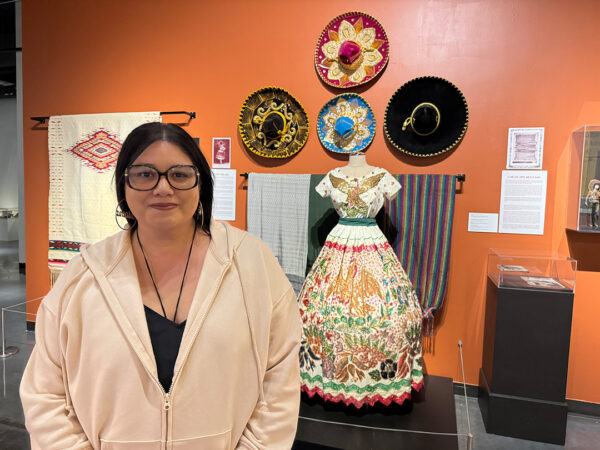

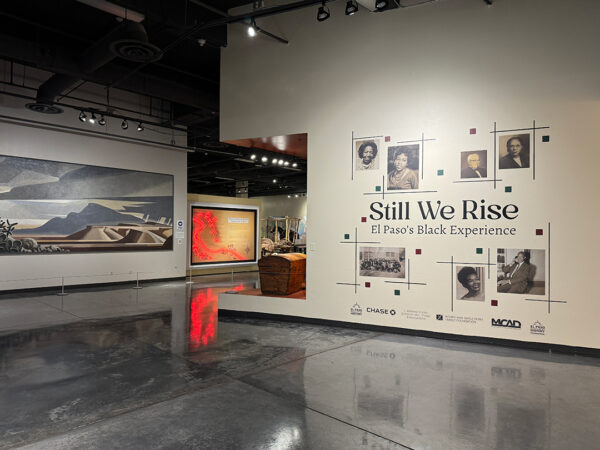



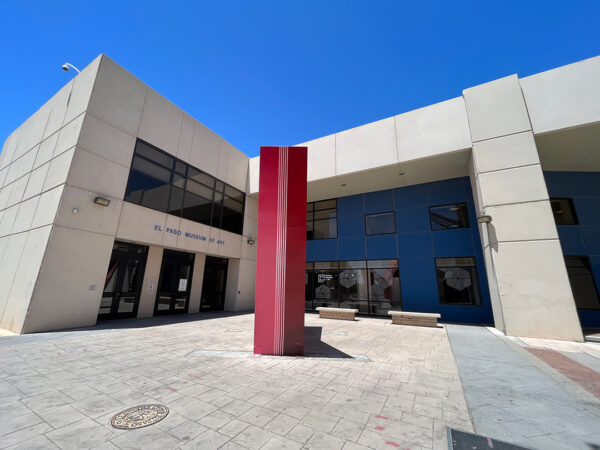

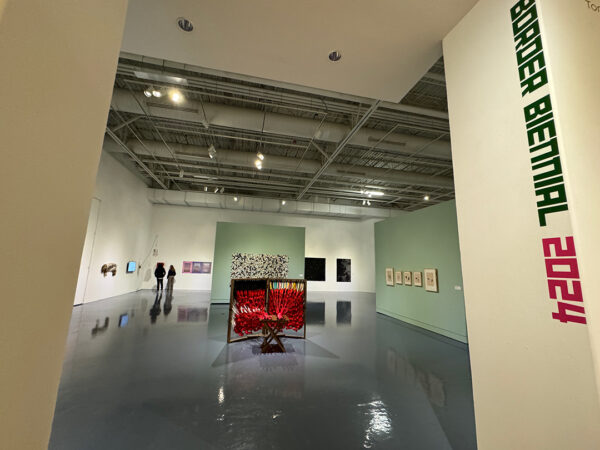
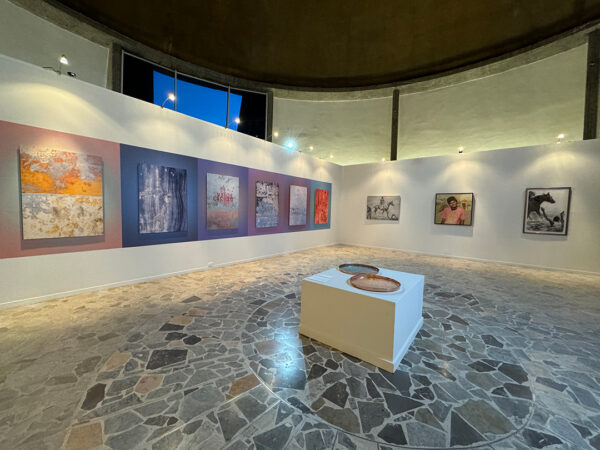
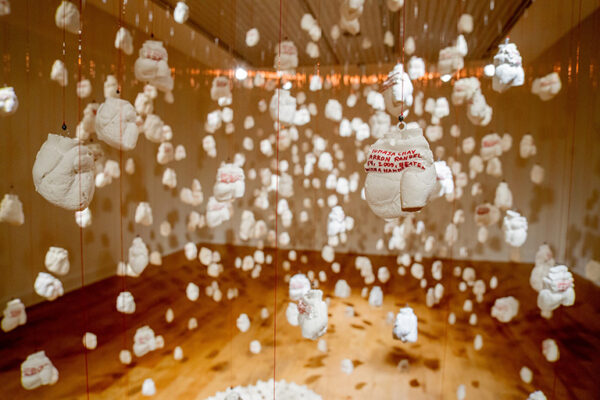


3 comments
The director of EPMArch is from Spain…he is not Latinx.
El Paso Museum’s Directors are doing a superb job in directing the Museums to meet the needs of it’s community. Thank you.
The El Paso/Cd Juárez/Las Cruces region is experiencing dynamic, unprecedented development in the cultural sector. The strong leadership in place at the flagship institutions portend well for the future.